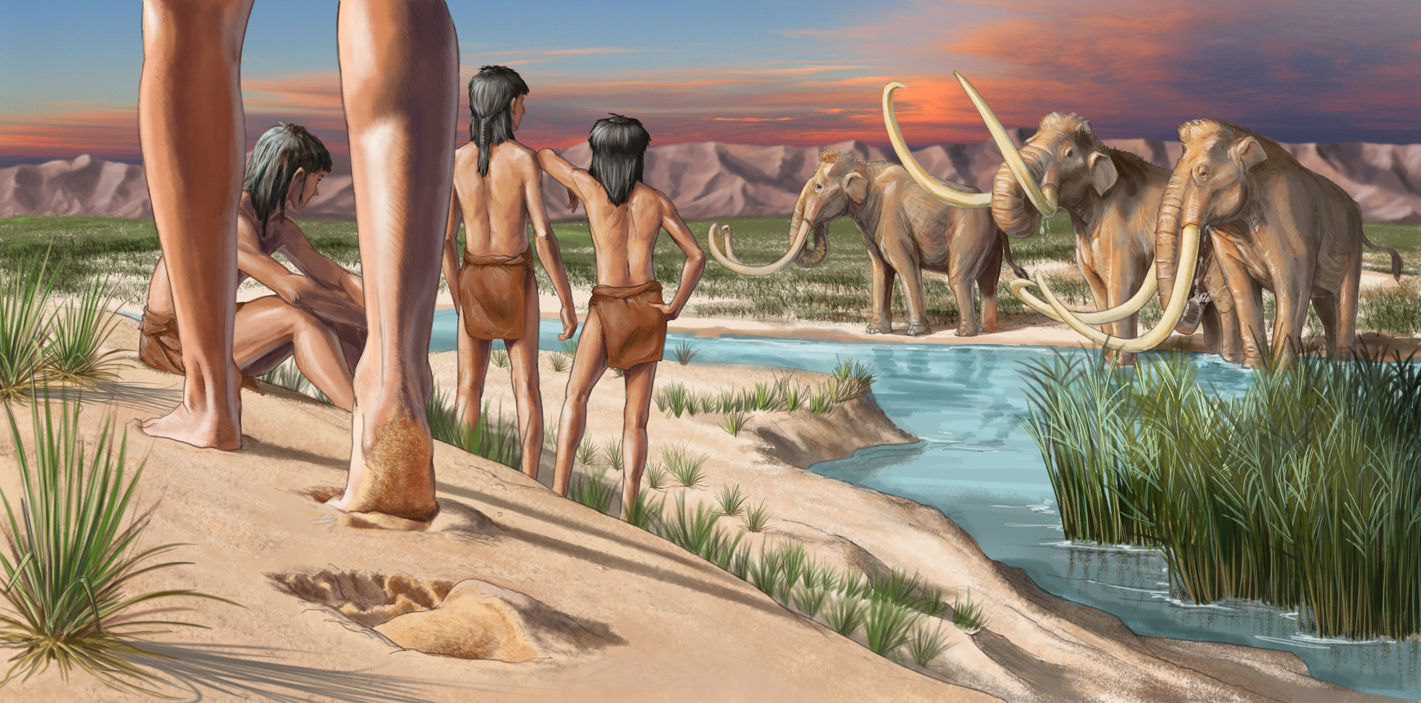News Release
You are viewing ARCHIVED content published online before January 20, 2025.
Please note that this content is NOT UPDATED, and links may not work. For current information,
visit https://www.nps.gov/aboutus/news/index.htm.

Karen Carr
|
Subscribe
|
Contact: Kelly Carroll, 575-520-2604
ALAMOGORDO – New scientific research conducted at White Sands National Park in New Mexico has uncovered the oldest known human footprints in North America. The discovery reveals evidence of human occupation in the Tularosa Basin beginning at least 23,000 years ago, thousands of years earlier than previously thought.“These incredible discoveries illustrate that White Sands National Park is not only a world-class destination for recreation but is also a wonderful scientific laboratory that has yielded groundbreaking, fundamental research,” said Superintendent Marie Sauter.
The fossilized human footprints were buried in multiple layers of gypsum soil on a large playa in White Sands National Park. Seeds embedded in the footprints were radiocarbon dated and analyzed by the U.S. Geological Survey to establish their age. The research dramatically extends the range for the coexistence of humans and Pleistocene (ice age) megafauna and confirms that humans were present in North America before the major glacial advances at the height of the last ice age closed migration routes from Asia. The findings are detailed in an article published in the journal Science.
"This study illustrates the process of science - new evidence can shift long held paradigms," said USGS Acting Rocky Mountain Regional Director Allison Shipp.
White Sands National Park contains the world’s largest-known collection of Pleistocene age (ice age) fossilized footprints in the world and has been recognized as a megatracksite since 2014. In addition to human footprints, tracks from the Columbian mammoth, saber-toothed cat, dire wolf, and other ice age animals have been discovered. More information about the park’s fossilized footprints is available at https://www.nps.gov/whsa/learn/nature/fossilized-footprints.htm.
Scientists from White Sands National Park, the National Park Service, U.S. Geological Survey, Bournemouth University, University of Arizona and Cornell University, in connection with the park’s Native American partners, have collaborated and consulted on this research.
White Sands National Park protects and preserves the world’s largest gypsum dunefield, at least 23,000 years of archaeology, adaptive flora and fauna, as well as Works Progress Administration-era historic pueblo buildings.
www.nps.gov/whitesands
About the National Park Service. More than 20,000 National Park Service employees care for America’s 423 national parks and work with communities across the nation to help preserve local history and create close-to-home recreational opportunities.
About the National Park Service. More than 20,000 National Park Service employees care for America’s 423 national parks and work with communities across the nation to help preserve local history and create close-to-home recreational opportunities.
Last updated: September 23, 2021
